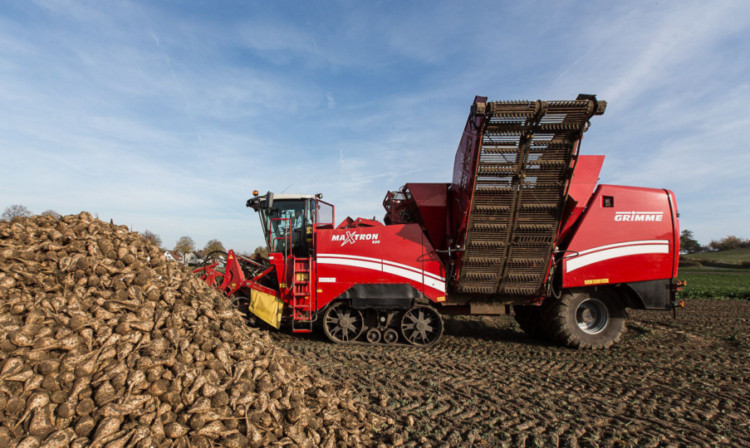The land around Hanover has grown sugar beet successfully for 140 years, and it is easy to see why.
This pleasant area of Nether Saxony is blessed with fertile, deep soils, gently undulating terrain and a moderate climate. Crucially, it has warm enough summers to make sure the beet always has a high sugar content.
Members of the European Arable Farmers Club on tour this week to the south of Hanover were told yields are now capable of reaching 90 tonnes per hectare. At 18% sugar content that means they are producing 16 tonnes of sugar per hectare.
“It is the queen of the arable crops in this region,” said one farmer.
It hasn’t all been plain sailing of late, however. The weather has taken its toll, bringing this year’s average for the Nordzucker factory at Schladen down to 59 tonnes per hectare.
Last year’s average was a more respectable 71 tonnes per hectare.
It is still profitable, however.
XAll sugar beet factories have a distinctive aroma, and the Schladen factory, right on the old East German border is no exception.
“Smell the money,” said the factory manager as we got out of our cars.
Nordzucker is a huge concern, with factories and refineries across northern Europe, the Baltic States and down into eastern Europe.
It is not a co-operative, but a very high proportion of the shareholders are farmers. Along with their shares comes a right to deliver beet.
The company has 3,300 employees, 2.4 billion euros of sales, and processes an astonishing 17.3 million tonnes of beet annually.
The Schladen plant is not one of the largest but still processes more than 1m tonnes of roots each season.
The campaign starts in mid-September and ends in January, but much of the crop has already been lifted allowing wheat to be sown on the land.
Neatly covered beet clamps can be seen dotted across the countryside ready for uplift.
The crop is normally lifted by contractors with very large harvesters. They all have bunkers, some carrying 30 tonnes of beet, and rather than use trailers they discharge straight into clamps.
Whenever delivery permits are issued the self-propelled loaders move in and transport begins.
It is a 24-hour-a-day operation, with the Schladen plant aiming to process 10,500 tonnes of roots per day.
Nordzucker have spent 30m euros on the factory over the last decade, including constructing a new access road which by-passes the village.
The company has done well of late, with sugar revenues up 21% last year alone.
Most of the production is white sugar, but around 270,000 tonnes are processed into what is known as thick juice which is then further processed on another site to produce ethanol.
Much attention is now paid to energy consumption. More efficient pulp dryers have been installed, but the factory still uses 200,000 cubic metres of gas per day during the campaign.
The ethanol beet is grown outside the EU quota, and here there is uncertainty. The new German coalition government is considered likely to be harder line when it comes to subsidising renewable energy.
Quotas will end in any case by 2017 as part of CAP reform, and this is leading to even more uncertainty.
Growers in the Schladen catchment were in earlier days quite happy to grow sugar beet one year in three.
As quotas have tightened they have moved to one year in four but, given the right market signals, they could move back to the closer rotation.
The crop is profitable for them. The price this season is likely to be about 45 euros per tonne. This includes a transport allowance, a price for the residual pulp which will be sold for animal feed, and a payment for covering the clamps.
The actual price for the beet once these factors have been taken into account is around 33 euros per tonne, which compares favourably with the current EU minimum guaranteed price of 26 to 29 euros depending on sugar content.
With a 70-tonne-per-hectare crop grossing 2,300 euros, it is hardly surprising that sugar beet is indeed the queen of crops in Nether Saxony.
